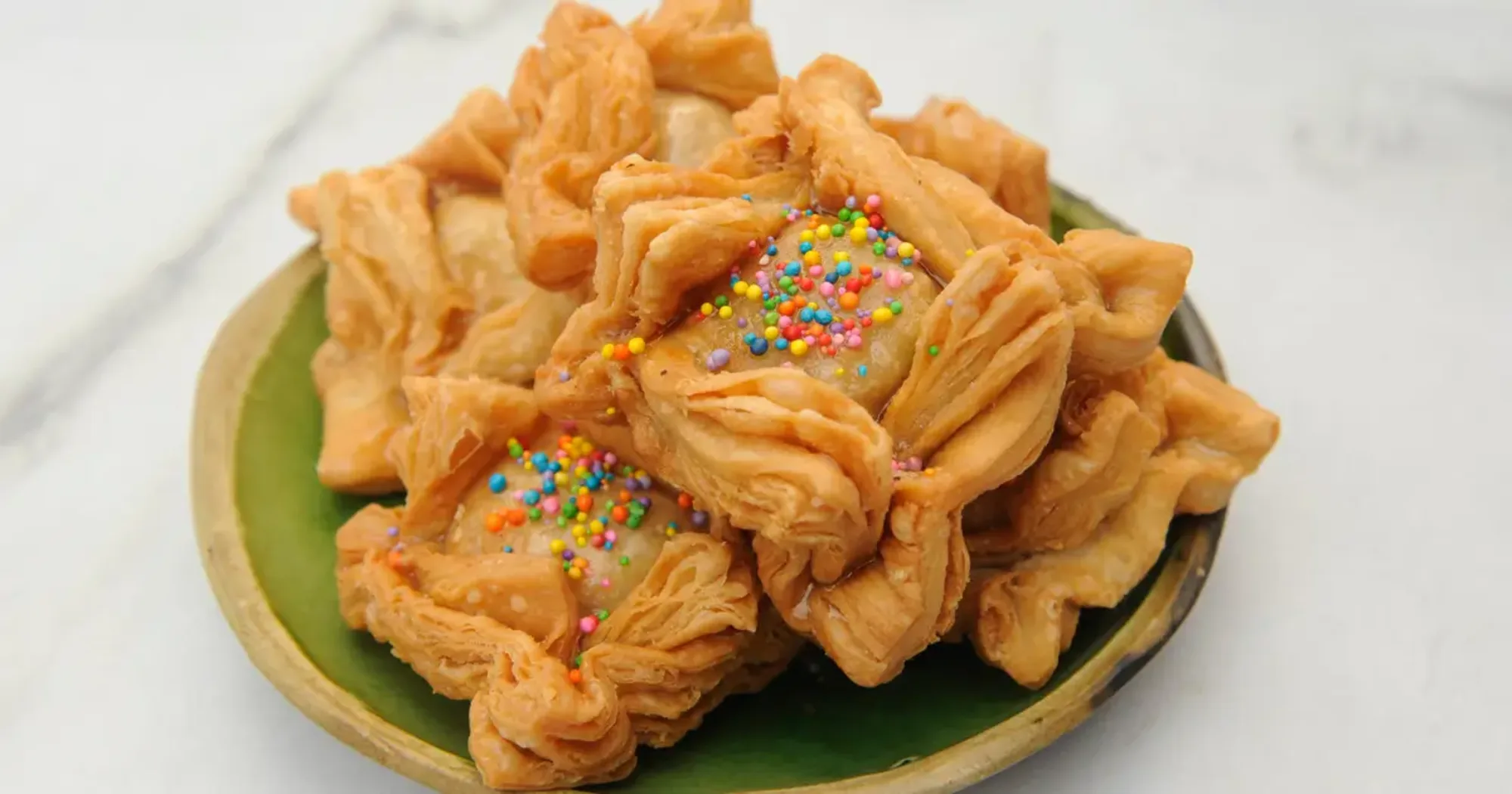
Pastelitos Criollos
Sweet fried pastries filled with quince or sweet potato paste.
Ingredients
- •Pastry dough
- •Quince paste
- •Sweet potato paste
- •Sugar
- •Oil
Instructions
Prepare Dough
Roll out pastry sheets (15 mins)
Fill
Add filling and shape pastries (25 mins)
Fry
Cook until golden and crispy (20 mins)
Pastelitos Criollos are delightful sweet pastries that hold a special place in Argentine cuisine. These crispy, flaky treats are typically filled with sweet quince paste (dulce de membrillo) or sweet potato paste (dulce de batata), then fried until golden and often finished with a sprinkle of sugar.
These pastries have deep roots in Argentine culture, traditionally served during May Revolution celebrations (May 25th) and other patriotic holidays. Street vendors, known as "pasteleríos," would announce their presence with bells, becoming a cherished part of the nation's culinary heritage.
To make Pastelitos Criollos, thin sheets of pastry dough are carefully folded around a dollop of sweet filling, creating small square or rectangular packets. The edges are sealed tightly to prevent the filling from escaping during frying. When fried, the pastry develops beautiful crispy layers while the filling becomes warm and gooey.
While traditional fillings remain the most popular, modern variations include dulce de leche, apple preserves, or even a mixture of quince and cheese. Some bakers add a touch of anise to the dough or dust the finished pastries with powdered sugar instead of the traditional granulated sugar.
In Argentina, these treats are particularly popular during afternoon tea or "merienda" and are essential during patriotic celebrations. They're often served warm, sometimes accompanied by a cup of mate or coffee, and are a common sight at bakeries and street fairs.
As with most fried pastries, Pastelitos Criollos are quite rich and should be enjoyed in moderation. The combination of fried dough and sweet filling makes them high in calories and sugar. However, they remain a beloved indulgence that's worth trying, especially during traditional celebrations when they carry special cultural significance.
